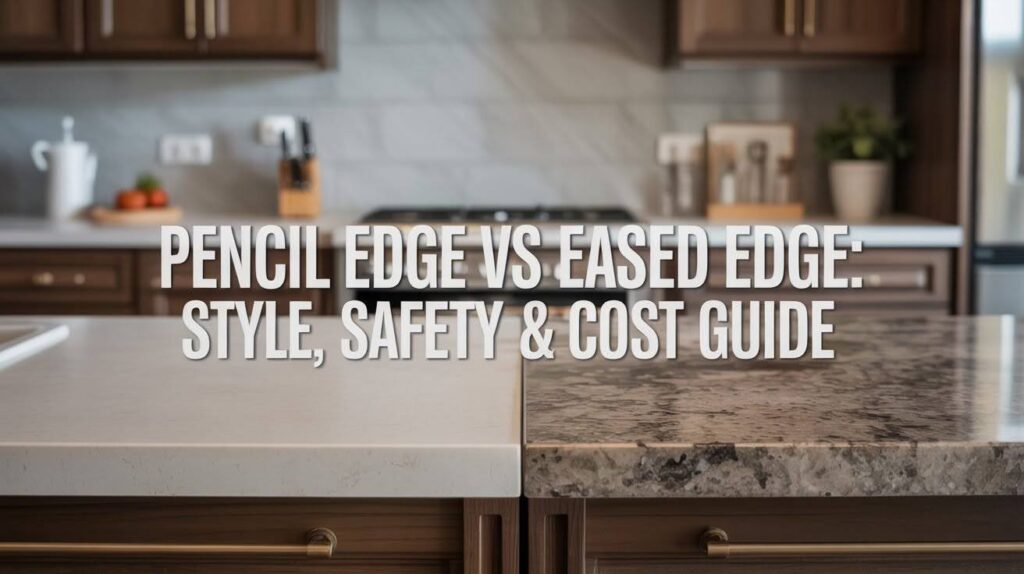Choosing between pencil edge vs eased edge countertops feels overwhelming. I get it. Something safe for your family is wanted, that looks great, and fits your budget.
Quite a few homeowners have sought assistance from me. I’ve assisted them in order to make this exact choice. You may not realize it, but that right edge can be meaningful.
With this guide, your countertop edge problem is solved. You will learn how each style looks in real kitchens. We will cover some safety tips for pets and for kids. I will show the actual costs to you. You’ll see maintenance differences.
You’ll know by the end exactly which edge for your home works. No confusion. No regrets. Trust in a clear answer that is coming right up.
What Are Pencil Edge and Eased Edge Countertops?
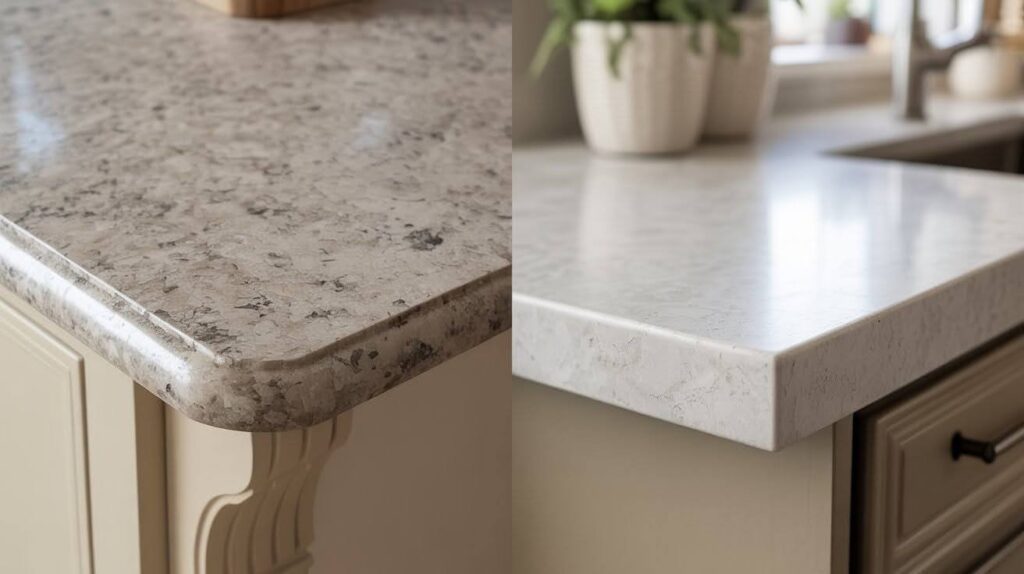
Let’s break down what makes each edge type different.
A pencil edge has a slightly rounded top corner. Think of it like the tip of a pencil. This edge creates a soft, gentle curve that works with granite, quartz, marble, or laminate. You’ll see it in modern and transitional kitchens.
An eased edge starts as a square corner with slight softening. The 90-degree angle gets rounded just a bit. This edge keeps a straight, clean look while being a touch softer. It holds up really well and resists chipping better than sharper edges.
Pencil Edge vs Eased Edge: Quick Comparison
Here’s everything you need to know in one place.
| Aspect | Pencil Edge | Eased Edge |
| Style | Quiet refinement with smooth, rounded curve. Works in modern, traditional, and transitional kitchens. Feels custom and polished. | Clean lines with barely-there rounding. Perfect for contemporary and functional spaces. Straightforward and minimal look. |
| Safety & Practicality | Rounded edges mean fewer injuries for kids and pets. Gentler than sharp corners. Resists chipping with no weak points. | Slight softening prevents painful bumps. Not dangerous but not fully rounded. Handles minor impacts well for busy households. |
| Cleaning & Maintenance | One smooth curve makes wiping easy. No grooves to trap dirt. No special tools needed. Holds up well over time. | Mostly-flat surface cleans with one straight motion. Crumbs and spills have nowhere to hide. Simple daily maintenance. |
| Cost | Requires more fabrication for shaping and polishing. Slightly higher labor cost but often included in pre-fab options. Harder stones take more time. | Most budget-friendly option with simple profile. Usually included in base price. Less fabrication time. Resists chipping so fewer repair costs. |
Lets elaborate the above mentioned aspects:
1. Style Comparison: Pencil Edge vs Eased Edge
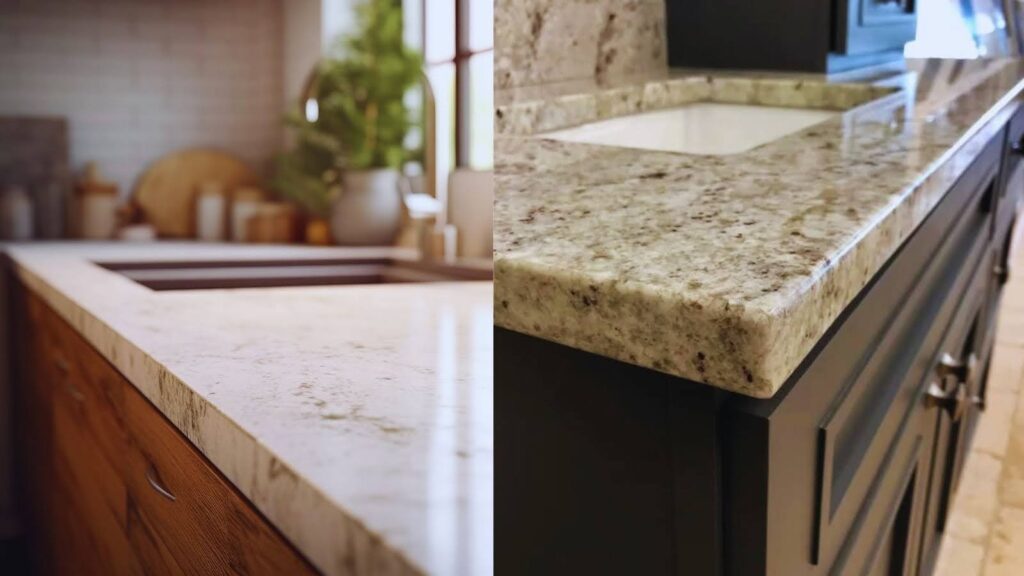
Visual Appeal of Pencil Edge:
Pencil edges bring quiet refinement to your kitchen. They don’t shout for attention. Instead, they add a polished touch that makes everything feel put together.
The smooth curve works in almost any kitchen style. Modern spaces love clean simplicity. Traditional kitchens appreciate the classic feel. Transitional designs get the best of both worlds.
This edge makes your countertop feel custom and intentional. It shows you care about the details.
Visual Appeal of Eased Edge:
Eased edges are all about clean lines and simplicity. They give you a straightforward look without any fuss.
The barely-there rounding keeps things minimal. You get safety without losing that crisp, geometric appearance.
Contemporary and functional kitchens pair perfectly with eased edges. If your design focuses on efficiency and modern living, this edge delivers.
2. Safety and Practicality
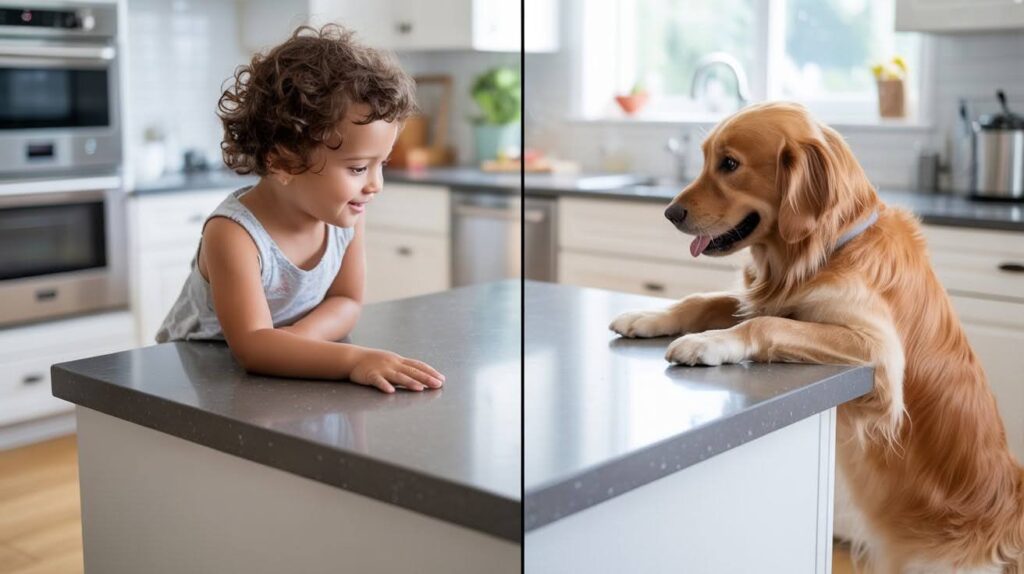
Pencil Edge Safety Benefits:
Rounded edges mean fewer injuries. If you have small kids running around, you’ll appreciate this daily.
Toddlers bump into counters all the time. A pencil edge is much gentler than a sharp corner. The same goes for pets who might jump or brush against the counter.
These edges also resist damage better. The curved profile has no weak points where chips easily start. Your countertop stays looking new longer.
Eased Edge Safety Benefits:
Eased edges take away the sharp bite of a square corner. They’re not completely round, but they’re not dangerous either.
The slight softening prevents those painful bumps we’ve all experienced. You won’t worry as much about kids or guests getting hurt.
Daily kitchen life can be rough on counters. Eased edges handle minor impacts without showing wear. That durability means peace of mind for busy households.
3. Cleaning and Maintenance
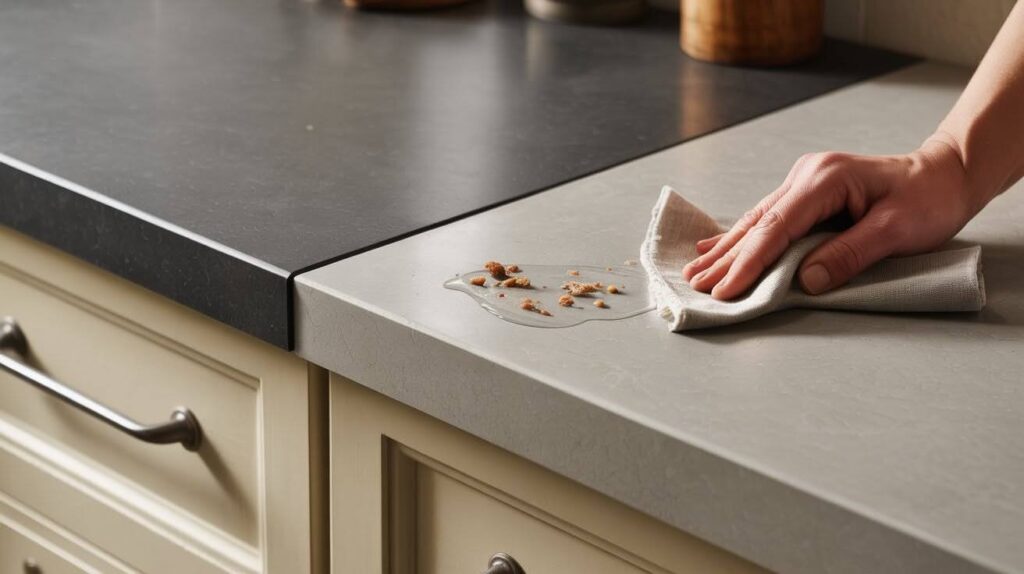
Both edges are easy to keep clean. Neither has complex curves or grooves that trap dirt.
Pencil edges have one smooth curve. A quick wipe takes care of everything. No special tools needed.
Eased edges are even simpler. The mostly-flat surface means you can clean with one straight motion. Crumbs and spills have nowhere to hide.
Over time, you won’t notice much difference in maintenance. Both edges hold up well to regular cleaning routines.
4. Cost Comparison
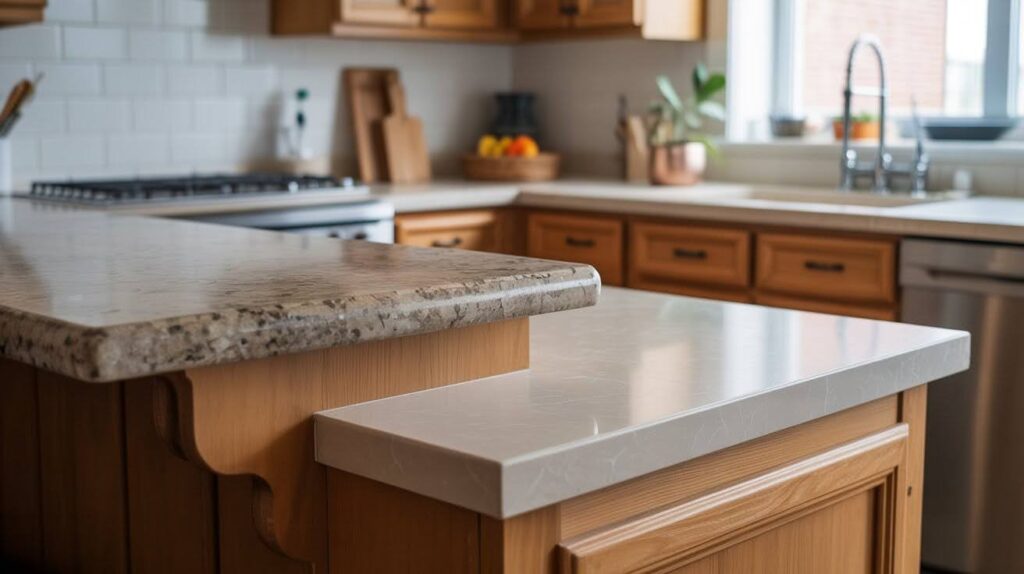
Price Factors for Pencil Edge:
Pencil edges require a bit more fabrication work. The curve needs careful shaping and polishing.
Expect to pay slightly more for the extra labor. But we’re talking about a small increase, not a huge jump.
Many pre-fabricated countertops include pencil edges as a standard option. If you’re buying from stock, you might not pay extra at all.
Material choice matters too. Harder stones like granite take more time to shape. Softer materials work up faster.
Price Factors for Eased Edge:
Eased edges are usually the most budget-friendly option. The simple profile means less fabrication time.
Most countertop quotes include eased edges in the base price. You won’t see an upcharge on your invoice.
The durability factor helps long-term costs too. Since eased edges resist chipping so well, you’ll spend less on repairs over the years.
If the budget is tight, an eased edge gives you a professional look without breaking the bank.
Choosing the Right Edge for Your Kitchen
Now it’s time to make your decision based on what matters most to you.
- Start with your kitchen’s overall style. Does it lean modern or traditional? Your edge should match that vibe.
- Think about who uses your kitchen daily. Young children need safer edges.
- Budget matters, but it shouldn’t be the only factor. A few extra dollars for the right edge pays off in satisfaction.
- Go with a pencil edge when you want softness and refinement. This edge adds warmth to your space.
- Minimalist designs love pencil edges. The simple curve fits the less-is-more philosophy perfectly.
- If you value safety and have kids or pets, the rounded profile gives you peace of mind.
- Pick an eased edge for modern, functional spaces. This edge supports clean contemporary design.
- Budget-conscious projects benefit from eased edges. You get a polished look at the lowest price point.
- Busy kitchens with lots of activity appreciate the durability. The edge holds up to whatever your household throws at it.
Conclusion
Now you may understand the actual contrasts between a pencil edge and an eased edge countertops. Pencil edges can offer up that more gentle refined curve.
These options are safer with easier cleanup. Edges are eased to bring crisp lines, durability, and to not stretch your budget.
How you live as well as what you love need an edge that fits your kitchen. Give thought to your counter all through an average day. Which edge for your home feels right?
Visit with a local countertop specialist for a view side-by-side. Touch them then compare them: make your choice confidently. Got questions?
Leave a comment because I can help you build a kitchen you will love daily.
Frequently Asked Questions
Which edge is better for families with young children?
Pencil edge is safer for families with small kids because the rounded profile reduces injury risk. The smooth curve has no sharp corners that can cause cuts or bruises.
Does pencil edge or eased edge cost more?
Eased edge is typically less expensive because it requires minimal fabrication work. Pencil edge may cost slightly more due to extra shaping and polishing.
Can I get either edge on any countertop material?
Both edges work with most materials including granite, quartz, marble, and laminate. Harder materials like granite may cost more to fabricate due to increased labor time.
Which edge is easier to keep clean?
Both edges are equally easy to clean with no significant difference. Pencil edges have a smooth curve while eased edges are nearly flat for quick wiping.
How do I decide between pencil edge and eased edge?
Consider your kitchen style, safety needs, and budget. Choose pencil edge for softer designs with young children, or eased edge for modern, budget-conscious projects.

